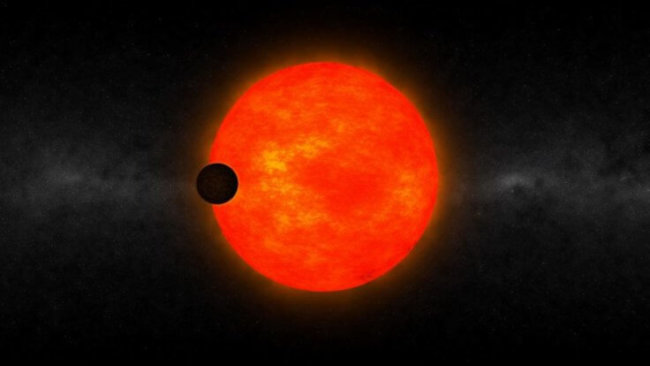- Get link
- X
- Other Apps

A giant planet the size of Jupiter, spinning too close to its dwarf star in our galaxy, does not fit into existing theories of planetary formation. Scientists at the Australian Astronomy and Astrophysics Research School believe that the massive planet has migrated into the system from the outside.
The planet has a mass similar to that of Saturn, but in its radius it is similar to Jupiter. “Because of the insufficient heating of its parent star, this planet is very different from the planets we have observed so far,” said researcher George Zhou.
The maternal star of the newly discovered exoplanet HATS-6 is classified as an M-dwarf. These stars, also known as red dwarfs, are common in our galaxy. About 70 percent of the stars of the Milky Way are red dwarfs. At the same time, they are poorly understood. Many of them are invisible to the naked eye.
HATS-6, a distance of 500 light years from us, emits only one-twentieth of the light flux of our Sun. A small amount of radiated energy does not make its planet potentially habitable.
However, the prevalence of these stars in the galaxy increases the chances of exoplanets on habitability, astrobiologists say. To be in the habitable zone of such a cold star, the planet needs to come close to it at a very close distance and turn one side. This will create unbearable living conditions on both sides of the planet, unless its dense atmosphere contributes to the distribution of heat.
The atmosphere of this planet is interesting for further study, Zhou said.
The planet was discovered by the transit method, based on a drop in brightness as the planet passes between the star and the observer. The discovery was made with the help of small robotic telescopes, among which are the telescopes of the Siding Spring Observatory of the Australian National University. The discovery was confirmed by the largest telescopes in the world, including Magellan in Chile.
The orbital period of the planet around its parent star is 3.3 days.
The study was published in the scientific journal Astronomical Journal.
Over the past twenty years, scientists have discovered more than 1,900 exoplanets in 1,200 planetary systems.
NASA Kepler satellite data show that billions of stars in the Milky Way have 1-3 planets in the habitable zone. Many stars have systems of 2-6 planets, but they remain unobservable for Kepler. New telescopes, which will work in the coming decades, are expected to speed up the search for exoplanets.
The article is based on materials .
- Get link
- X
- Other Apps
Comments
Post a Comment